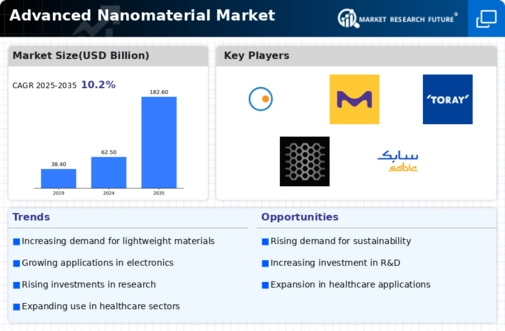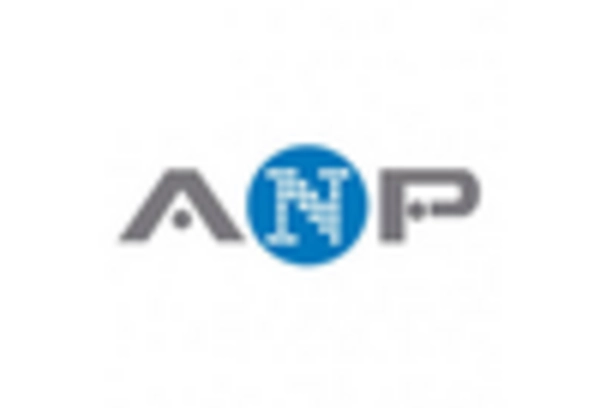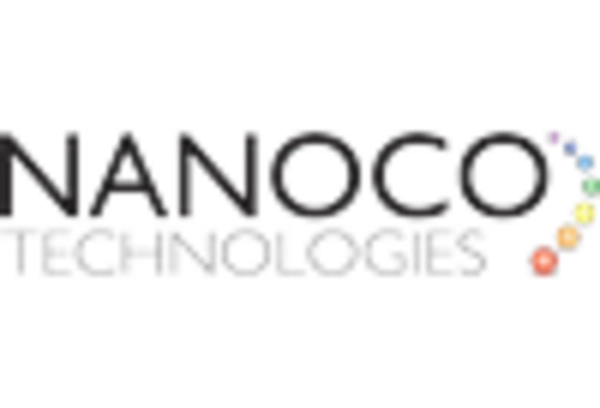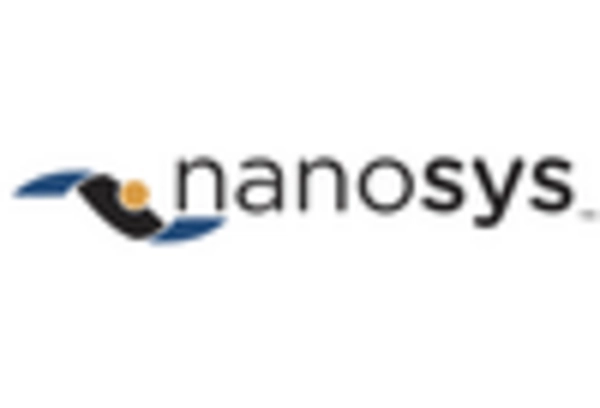Healthcare Innovations
The Advanced Nanomaterial Market is witnessing a surge in healthcare innovations, particularly in drug delivery systems and diagnostic tools. Nanomaterials enable targeted drug delivery, which enhances the efficacy of treatments while minimizing side effects. The market for nanomedicine is expected to reach substantial figures, with projections indicating a valuation exceeding 200 billion by 2027. This growth is attributed to the increasing prevalence of chronic diseases and the need for advanced therapeutic solutions. Additionally, nanomaterials are being utilized in imaging and diagnostic applications, improving the accuracy of disease detection. As healthcare providers seek more effective and less invasive treatment options, the Advanced Nanomaterial Market is poised for significant expansion, driven by ongoing research and development efforts.
Electronics Advancements
The Advanced Nanomaterial Market is significantly impacted by advancements in electronics. The miniaturization of electronic components has led to a growing demand for nanomaterials that can enhance performance and efficiency. For example, nanostructured materials are being utilized in the production of high-performance batteries and capacitors, which are essential for the development of next-generation electronic devices. The market for nanomaterials in electronics is projected to grow at a robust pace, with estimates suggesting a potential increase of over 20% annually. This growth is fueled by the rising demand for smart devices and the Internet of Things, which require advanced materials to meet performance standards. As technology continues to evolve, the Advanced Nanomaterial Market is likely to play a crucial role in shaping the future of electronics.
Energy Storage Solutions
The Advanced Nanomaterial Market is experiencing growth driven by the demand for advanced energy storage solutions. As the world shifts towards renewable energy sources, the need for efficient energy storage systems becomes paramount. Nanomaterials, such as graphene and carbon nanotubes, are being explored for their potential to enhance the performance of batteries and supercapacitors. The energy storage market is expected to witness a significant increase, with projections indicating a market size exceeding 100 billion by 2026. This growth is largely attributed to the rising adoption of electric vehicles and renewable energy systems, which require reliable and efficient storage solutions. The Advanced Nanomaterial Market is thus positioned to benefit from these trends, as innovations in nanomaterials could lead to breakthroughs in energy storage technology.
Sustainability Initiatives
The Advanced Nanomaterial Market is increasingly influenced by sustainability initiatives. As industries strive to reduce their environmental footprint, nanomaterials offer innovative solutions. For instance, nanomaterials can enhance energy efficiency in various applications, including construction and manufacturing. The market for sustainable nanomaterials is projected to grow significantly, with estimates suggesting a compound annual growth rate of over 15% in the coming years. This growth is driven by the demand for eco-friendly materials that can replace traditional options, thereby reducing waste and energy consumption. Furthermore, regulatory frameworks are evolving to support the adoption of sustainable practices, which further propels the Advanced Nanomaterial Market. Companies that invest in sustainable nanomaterials are likely to gain a competitive edge, as consumers increasingly favor environmentally responsible products.
Aerospace and Defense Applications
The Advanced Nanomaterial Market is also being propelled by its applications in aerospace and defense. The unique properties of nanomaterials, such as lightweight and high strength, make them ideal for use in aircraft and military equipment. The aerospace sector is increasingly adopting nanomaterials to improve fuel efficiency and reduce emissions, aligning with global sustainability goals. The market for nanomaterials in aerospace is projected to grow significantly, with estimates suggesting a compound annual growth rate of around 12% over the next few years. Additionally, advancements in nanotechnology are enabling the development of advanced coatings and materials that enhance the durability and performance of defense systems. As the demand for innovative solutions in aerospace and defense continues to rise, the Advanced Nanomaterial Market is likely to see substantial growth.


















Leave a Comment